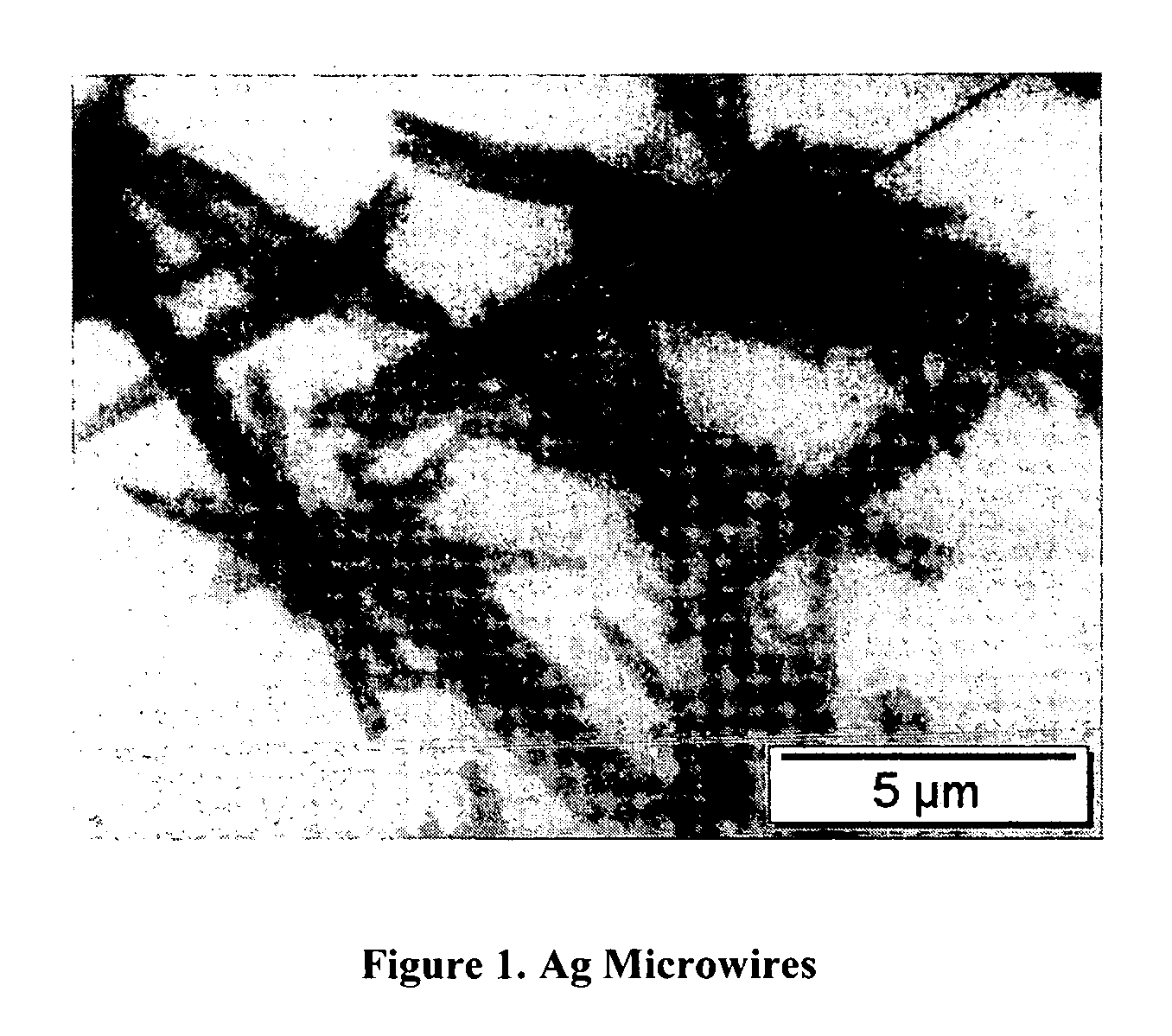Silver microribbon composition and method of making
a silver microribbon and composition technology, applied in the direction of liquid/solution decomposition chemical coating, application, conductor, etc., can solve the problems of poor transparency and low expected uniform development of coating, and achieve low optical density, large microribbons, and simple and cost-effective effects
- Summary
- Abstract
- Description
- Claims
- Application Information
AI Technical Summary
Benefits of technology
Problems solved by technology
Method used
Image
Examples
example 1
Preparation of Microribbon
Preparing AgCl Solution in Acetone:
[0052] To a reactor charged with 20.6 g of Butvar-76, 10.5 g of lithium chloride and 500 c.c. of acetone, 54 g of solution containing 20% of silver trifluoroacetate and 80% of acetone, was added in 90 seconds under rigorous stirring. The solution was allowed to settle for 60 minutes. The supernatant was then decanted. The settled slurry is referred to as the AgCl solution for the following preparation.
Preparing Ag Microribbon:
[0053] To 25 g of AgCl slurry 0.2 g of 1 percent Tin Chloride was added and the resulting mixture was left to sit at 40° C. for three minutes. Then 3 g of 0.02% potassium tetrachloroaurate, 10 g of acetone, 10 g of ascorbic acid palmitate and 7 g of tributyl amine were added. The mixture was allowed to sit at 50 C for 40 minutes. The resulting silver wires have a mean diameter of 0.5 micron and a mean length of 10 microns. A transmission electron photomicrograph of the resulting microribbons app...
PUM
| Property | Measurement | Unit |
|---|---|---|
| Length | aaaaa | aaaaa |
| Length | aaaaa | aaaaa |
| Percent by mass | aaaaa | aaaaa |
Abstract
Description
Claims
Application Information
 Login to View More
Login to View More - R&D
- Intellectual Property
- Life Sciences
- Materials
- Tech Scout
- Unparalleled Data Quality
- Higher Quality Content
- 60% Fewer Hallucinations
Browse by: Latest US Patents, China's latest patents, Technical Efficacy Thesaurus, Application Domain, Technology Topic, Popular Technical Reports.
© 2025 PatSnap. All rights reserved.Legal|Privacy policy|Modern Slavery Act Transparency Statement|Sitemap|About US| Contact US: help@patsnap.com

